In recent years, the ATV rental business has experienced remarkable growth, becoming a popular choice for outdoor enthusiasts looking for thrilling adventures.
The industry’s expansion can be attributed to factors such as increased accessibility, affordability, and changing consumer preferences in outdoor activities.
As a result, entrepreneurs are seizing the opportunity to provide unforgettable experiences to customers and generate revenue.

Before diving into the world of ATV rentals, entrepreneurs need to be well-informed about the various aspects of starting and operating this type of business.
This includes creating a solid business plan, choosing the perfect location, acquiring the right equipment, and delivering top-notch customer service.
Ensuring that the venture complies with legal requirements and has sufficient insurance coverage is equally important.

Key Takeaways
- A solid business plan is crucial for the success of your ATV rental venture
- Carefully selecting the right location and equipment ensures a smooth operation
- Delivering excellent customer service is key to setting your business apart from competitors
Understanding the ATV Rental Business
I’ve noticed a growing trend in the world of outdoor adventure – the rise of the ATV rental business. This trend has been fueled by people’s desire to explore off-road terrains and experience the thrill of riding these fun vehicles.
In this section, I want to provide a brief overview of the ATV rental business and the factors that have contributed to its growth.
ATVs, or all-terrain vehicles, are off-road vehicles designed for traversing various terrains such as forests, deserts, or mountains. They come in different sizes and styles, and they can be rented by individuals, families, or groups for a few hours to a full day.
The ATV rental business offers customers the opportunity to experience these exciting off-road adventures without the need for personal ownership.

There are several reasons why the ATV rental business has blossomed over the years. One factor is that purchasing an ATV can be quite expensive, with some new models costing upwards of several thousand dollars.
Also, the maintenance costs and the need for a place to store the vehicle can add up. Renting an ATV makes it more accessible and affordable for adventure seekers who may not want the responsibility of ownership.
Another contributing factor is the rise in popularity of outdoor activities and adventure sports. People are increasingly looking for ways to disconnect from their busy lives and enjoy nature.
Riding ATVs allows them to do that while also providing a thrilling outdoor experience. This growing interest has led to the expansion of ATV riding locations and trails throughout many regions, further fueling the growth of the rental business.

Safety is also an important aspect of the ATV rental industry. Rental businesses often provide training and safety equipment to ensure that customers have a fun and safe experience.
Some businesses even offer guided tours to assist riders in navigating unfamiliar terrains, which can be an added benefit for novice riders or those looking to explore a new area.
The ATV rental business has grown rapidly in recent years, catering to a wide variety of customers and adventure enthusiasts. Offering an exciting and accessible way to explore off-road terrains, the industry has captured the interest of many people who may have never considered riding an ATV otherwise.
As the popularity of ATV rentals continues to grow, the industry shows no signs of slowing down.

The Necessity of a Solid Business Plan
When I decided to start an ATV rental business, I quickly realized that having a solid business plan was crucial. Not only does it provide a roadmap for success, but it also helps in acquiring funding and laying out a clear vision for the future.
In this venture, research is essential in understanding the market, competition, startup costs, and the profitability of an ATV rental business.
One of the first things I needed to do was research my audience and competition. Knowing the target demographics, such as age and income levels, helped me tailor my services to meet their needs.

Furthermore, having a clear understanding of my competitors allowed me to find ways to differentiate my business and identify potential gaps in the market.
A well-written business plan also outlines the startup costs associated with opening an ATV rental business. This includes the cost of purchasing or leasing ATV units, acquiring necessary permits and licenses, and setting up a rental location.
A budget for marketing efforts, insurance, and employee salaries should also be factored into the business plan.
For my business, creating a pricing structure that offers competitive rates while still being profitable was essential. By estimating expenses and projecting revenue, I was able to determine how long it would take for my ATV rental business to achieve profitability.

This information was invaluable when it came to securing financing from investors or lenders, as they typically like to see a well-thought-out timeline for return on their investment.
In conclusion, having a solid business plan is a crucial first step in starting a successful ATV rental business. By conducting thorough research, understanding startup costs, and projecting revenue, I was able to establish a profitable venture that met the needs of my target audience and stayed ahead of the competition.
Don’t underestimate the power of a well-crafted business plan – it’s the foundation of any successful venture.
Choosing the Appropriate Location
When I started looking into the ATV rental business, I quickly realized that selecting the right location is a crucial factor for success. It’s important to find a place with the perfect mix of terrain, accessibility, and potential customers.
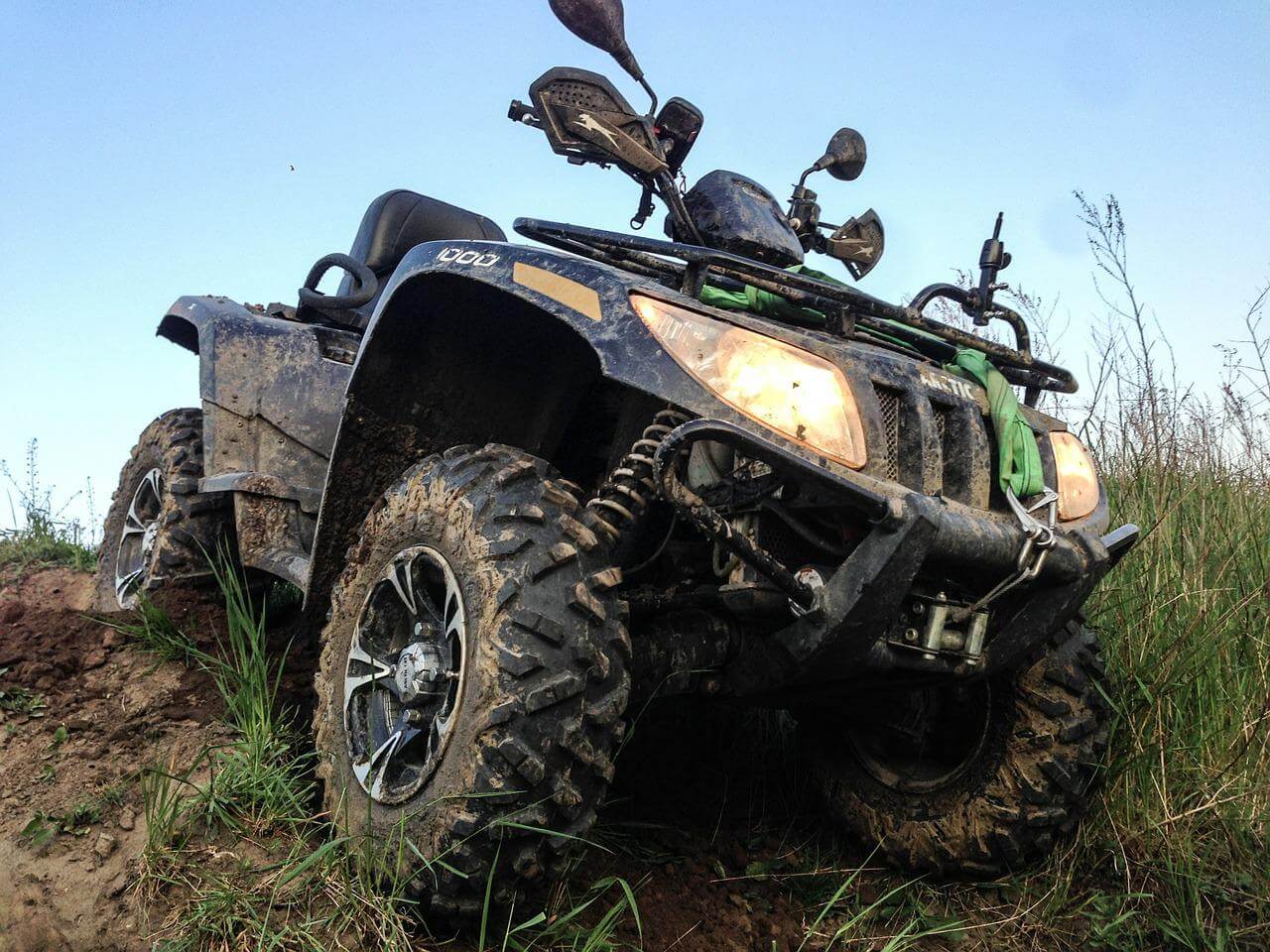
The first thing I considered was the terrain. The area should offer a variety of trails with varying levels of difficulty to accommodate a diverse range of ATV riders. This may include dense forests, open fields, and challenging hill climbs.
Having a diverse terrain allows riders to feel a sense of adventure and provides them with an opportunity to explore new areas.
Another aspect to consider is the accessibility of the trails. Ideally, the location should be easily reachable by local roads, and there should be ample parking spaces for customers.
It’s also important to have clear signage and directions to guide people to your rental facility, ensuring that they can find you without any issues.
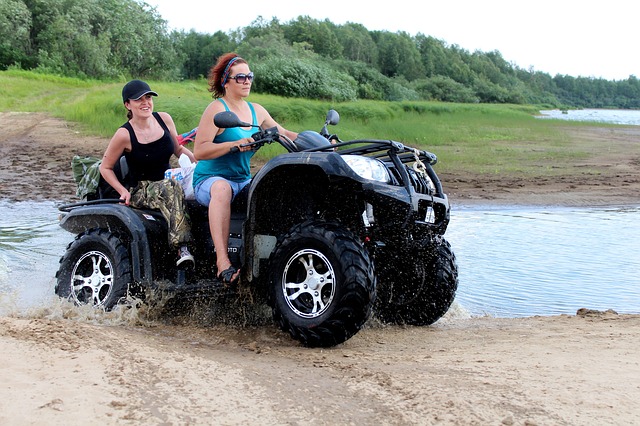
Lastly, I found it essential to research the local ATV riding community. Getting to know their needs, preferences, and expectations will help you to offer the best possible services and equipment.
It’s also important to consider any local regulations, permits, or restrictions that may affect your ATV rental business.
By considering these elements, I’ve been able to select the perfect location for my ATV rental business, offering a unique experience to riders of all skill levels.
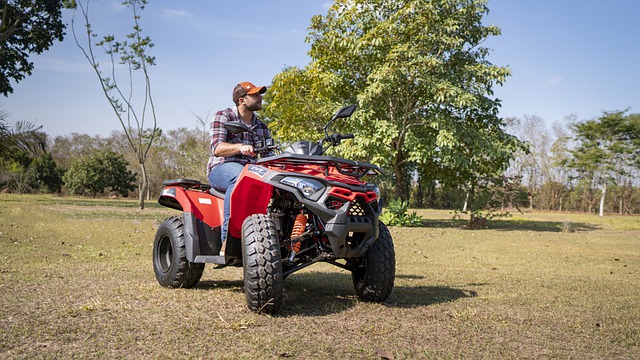
With the right location, it has become easier to promote my business and establish a satisfied customer base.
The Importance of Insurance
As an ATV rental business owner, I cannot overstate the importance of insurance. It has a crucial role in protecting not only my business but also my customers.
In this section, I will discuss the various types of insurance coverage and why they are essential for a successful ATV rental business.

Firstly, liability insurance is a must-have for any ATV rental business. Accidents can happen, and if a customer gets injured or damages someone else’s property while riding one of my ATVs, liability insurance will cover the associated costs.
This insurance policy not only protects me from lawsuits but also shows responsibility towards my customers, giving them peace of mind during their rides.
Secondly, I need to consider property insurance to protect my fleet of ATVs and other equipment. Theft, vandalism, and natural disasters can happen at any time.

With comprehensive property insurance, I can ensure that my business continues running smoothly even when unexpected events occur.
Additionally, I should look into workers’ compensation insurance if I have employees working at my ATV rental business. This coverage protects both me and my workers in case of workplace injuries or illnesses.
Equipping myself with workers’ compensation insurance not only complies with local laws (where applicable) but also ensures that my employees feel safe and secure while working for me.

Moreover, I could also explore offering optional ATV rental insurance to my customers. This type of insurance would cover the cost of repairing or replacing a damaged ATV while in their possession.
Providing such an option to my clients contributes to their satisfaction and adds an extra layer of protection for my business.
In conclusion, without proper insurance coverage in place, my ATV rental business could be at risk. Investing in the right types of insurance not only safeguards my assets but also ensures the well-being of my customers and employees, an essential factor in maintaining a successful and reputable ATV rental business.

Acquiring the Right Equipment
When starting an ATV rental business, it’s essential to acquire the right equipment. The types of ATVs and UTVs you’ll need to invest in can vary depending on your target customers and the terrain options you have.
Here’s what you need to consider when choosing your fleet:
First, decide on the variety of ATVs and UTVs you want to offer. It’s a good idea to have a mix of options to cater to different skill levels and preferences. You might want to include:
- Sports ATVs: These are designed for speed and performance, making them ideal for experienced riders looking for an adrenaline-packed adventure.
- Utility ATVs: These are more versatile and can handle various tasks such as towing, plowing, and hauling. They are perfect for customers interested in exploring trails and scenic routes.
- Side-by-side UTVs: With their ability to seat multiple passengers, UTVs are great for families and those looking for a more social experience.
Next, consider the size and power of the ATVs in your fleet. You’ll want to ensure the equipment can handle the terrain and suit the needs of your customers. For instance, a 250cc ATV is suitable for beginners, while a more powerful 500cc or higher ATV will be better suited for advanced users.
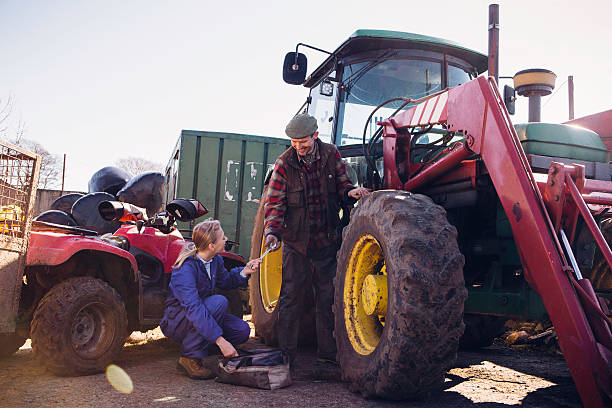
Lastly, don’t forget about safety gear and accessories. Be sure to equip your rental business with helmets, goggles, gloves, and other protective clothing. Further, invest in tools like winches and GPS devices that will help your customers have a smooth and enjoyable experience.
By carefully selecting the right equipment, you can create a fantastic ATV rental business that caters to your customers’ needs while providing unforgettable off-road adventures.
Financing Your ATV Rental Business
I found that financing my ATV rental business was a crucial step in getting it off the ground. To ensure I had enough funds, the first thing I did was create a detailed business plan, which outlined my projected expenses, revenue, and growth strategies.

Next, I considered different financing options. A popular choice for many entrepreneurs is a small business loan from a bank or credit union. To secure a loan, lenders may require a good credit score, collateral, and a solid business plan. I made sure to have all my documentation ready to present to potential lenders.
Another option I looked at was seeking investors for my ATV rental business. This could be friends, family, or angel investors interested in the outdoor recreation industry. I prepared a professional pitch outlining my business concept, target market, and financial projections in order to attract potential investors.
Remember, it’s important to be realistic about the possible returns and risks involved, as investors will expect a return on their investment.
Additionally, I considered alternative financing options, such as crowdfunding platforms or peer-to-peer lending. These methods helped me reach a broader audience of potential supporters who could contribute small amounts to help fund my ATV rental business.

Regarding my expenses, I learned the importance of prioritizing them. Some of my initial costs included purchasing ATVs, insurance, permits, and marketing materials.
Finally, I made sure to keep track of all my expenses and income to ensure my business remained financially stable and viable.
I hope my experience can help you plan and finance your ATV rental business effectively. Good luck!
Setting Your Pricing Strategy
I know that the success of my ATV rental business depends on having a solid pricing strategy. To set the right prices, I consider my costs, the profitability of the business, and customers’ willingness to pay.

First, I need to calculate my costs. I include the initial investment in ATVs, maintenance, insurance, staff salaries, and any facility or storage expenses. Additionally, I factor in the cost of fuel, cleaning supplies, and regular inspections.
By understanding my costs, I can set prices that cover my expenses and still make a profit.
Of course, profitability is crucial, so I research my competition to see what they’re charging, and I think about my target market. To appeal to a wide range of customers, I might offer different pricing levels like hourly, half-day, and full-day rentals.
I could also create package deals that bundle activities or routes, giving customers more value for their money.

To further maximize my revenues, I monitor my business’ seasonal fluctuations and adapt my pricing strategy accordingly.
For example, during peak seasons or weekends, I might slightly increase prices to capitalize on higher demand. Conversely, during slower periods, I could provide discounts to attract more customers and keep my ATVs in circulation.
To make this pricing strategy even more effective, I pay attention to customer feedback and continuously revise my prices based on what I learn.
This way, I can maintain a competitive edge, keep my business profitable, and ensure my customers are satisfied with the value they receive.

Marketing Your ATV Rental Business
I understand that marketing is crucial for the success of my ATV rental business. To effectively promote my business, I’ll start by creating a website that showcases my fleet and provides all the necessary information to potential customers.
The website will include an engaging blog where I can share news, tips, and articles to attract and retain readers. This will also help with search engine optimization (SEO), making it easier for my target audience to find me online.
Social media also plays a significant role in modern marketing, so I will create accounts on platforms such as Instagram and Twitter to share appealing images, videos, and updates about my ATV rental business.

These platforms allow me to directly engage with my customers and inform them of any special offers or events.
Advertising is another important aspect of marketing my ATV rental business. I’ll need to determine an advertising budget and identify the best channels to reach my target customers.
This might include targeted online ads, partnerships with local tourism agencies, or even print ads in relevant outdoor adventure magazines.
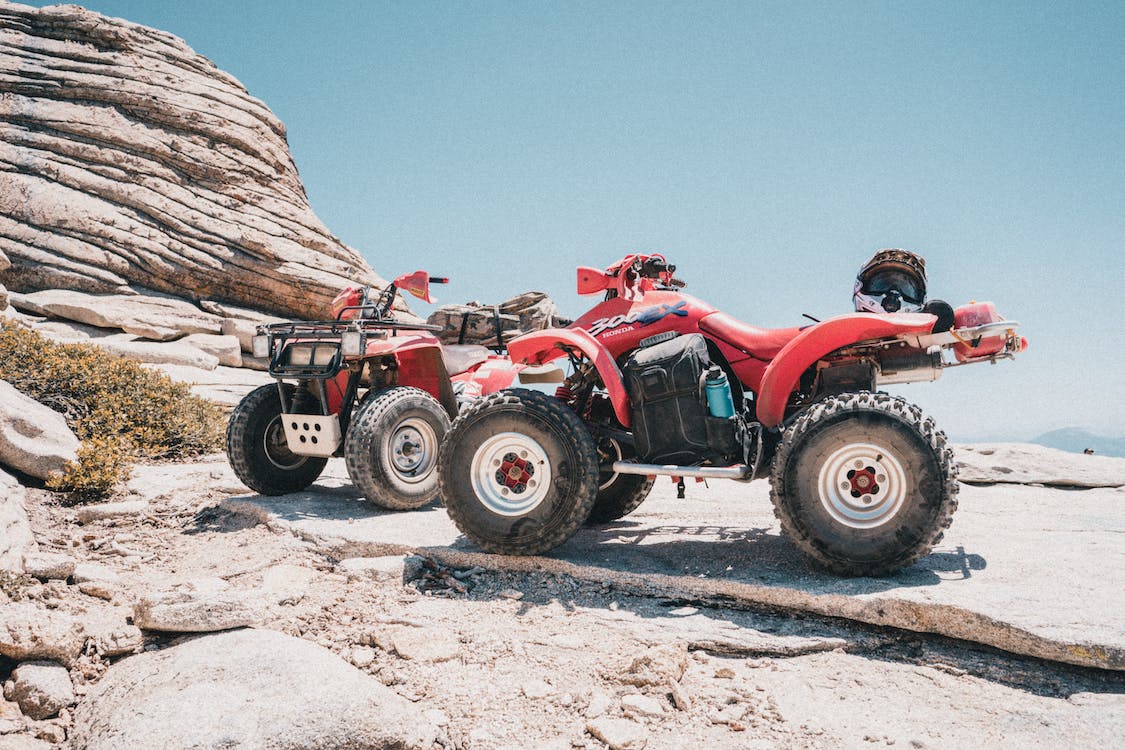
Additionally, I’ll strive to grow organically through word-of-mouth by offering exceptional customer service and cultivating positive relationships with my clients.
Encouraging satisfied customers to leave reviews and share their experiences on social media can help build my business’s reputation and credibility.
To stay ahead in this competitive market, I’ll consistently analyze the performance of my marketing efforts, making improvements as needed and exploring new opportunities to reach my desired target audience.
This continuous adaptation will ensure the long-term success of my ATV rental business.

Leveraging Special Offers and Discounts
As an ATV rental business owner, I always look for ways to attract more customers. One of the most effective strategies I’ve found is offering special promotions, discounts, and deals.
By leveraging these marketing tools, I can generate more interest in my business, ultimately increasing bookings and revenue.
First of all, discounts are an excellent method to encourage potential customers to choose my ATV rental services over competitors. I’ve found that offering a percentage off the regular rental price entices them to give my business a try.
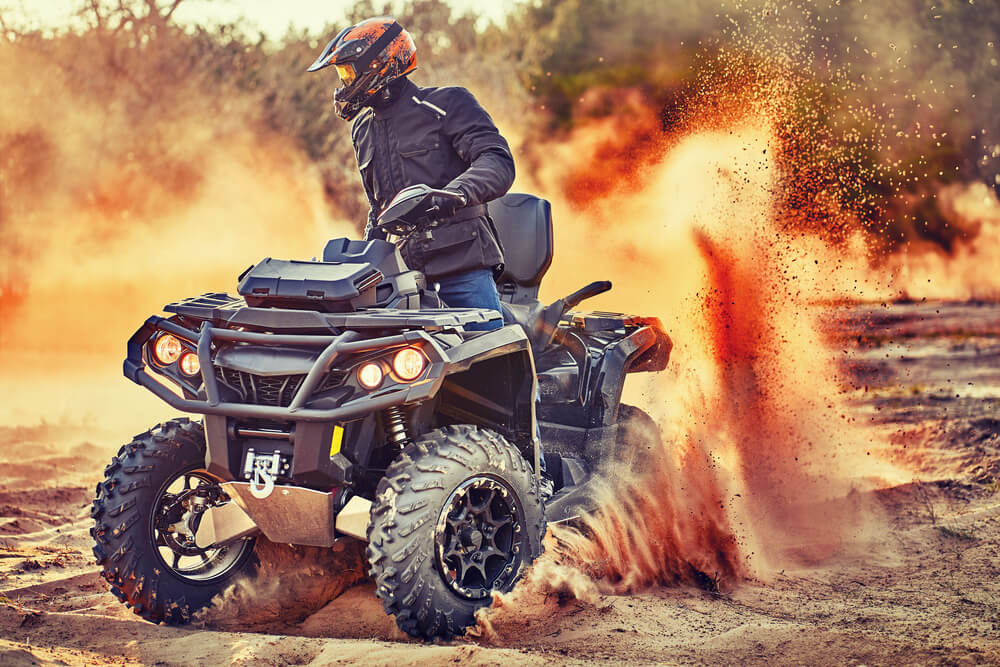
For example, I may advertise a 10% discount on weekdays to make my services more attractive and fill any lulls in business.
Special offers are a fantastic way to reward loyal customers and incentivize repeat bookings. I like to create a loyalty program offering a free rental after a certain number of bookings, or I might propose a limited-time bundle deal, like a three-ride package at a discounted rate.
These offers not only make my customers feel valued but also keep them coming back for more.
Lastly, I’ve found that partnering with other local businesses allows me to create unique promotional packages. For example, I might collaborate with a nearby restaurant or hotel to offer a full experience, such as an ATV adventure followed by dinner or an overnight stay.
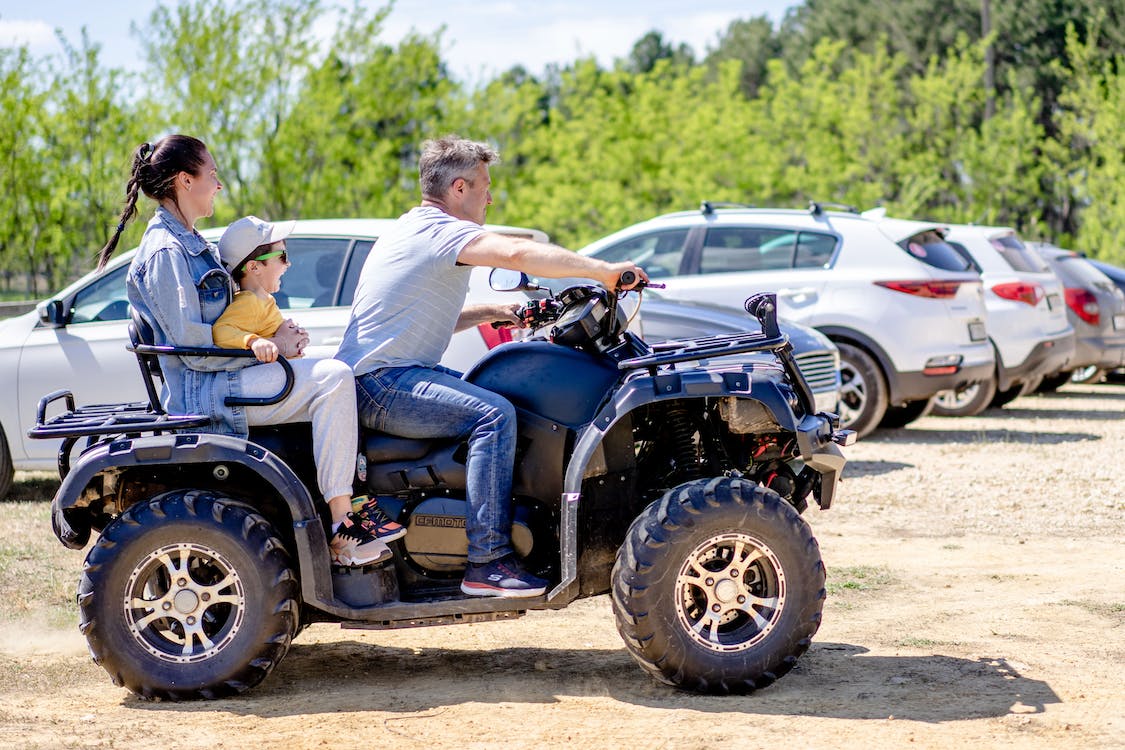
This not only benefits my rental company but also drives more foot traffic to the partnered establishments.
By implementing these tactics of discounts, special offers, and promotions, I’ve observed a significant boost in my ATV rental business bookings.
They help maintain a friendly atmosphere and build long-lasting relationships with customers, ultimately contributing to the overall success and growth of my business.

Knowing Your Competition
As someone who’s considering entering the ATV rental business, I believe it’s essential to understand my competition. To do that, I have done some research and analysis to see what I can learn from the current players in the market.
One thing I have noticed about successful ATV rental businesses is that they offer a diverse range of ATVs, appealing to various customer preferences. By providing options for beginner riders, intermediate riders, and experienced riders, they cater to a broader audience.
Having a good mix of vehicles allows me to compete more effectively.

Another critical factor in standing out from the competition is offering competitive prices without compromising safety or customer experience. I have found that customers are more willing to pay a reasonable price for a top-notch experience, so I will focus on maintaining high-quality ATVs and excellent customer service.
During my research, I also noticed that other ATV rental businesses tend to have strategic partnerships with local businesses and attractions. These partnerships help bring in more customers and generate cross-promotional opportunities.
To stay competitive, I will explore similar collaborations in my target area.
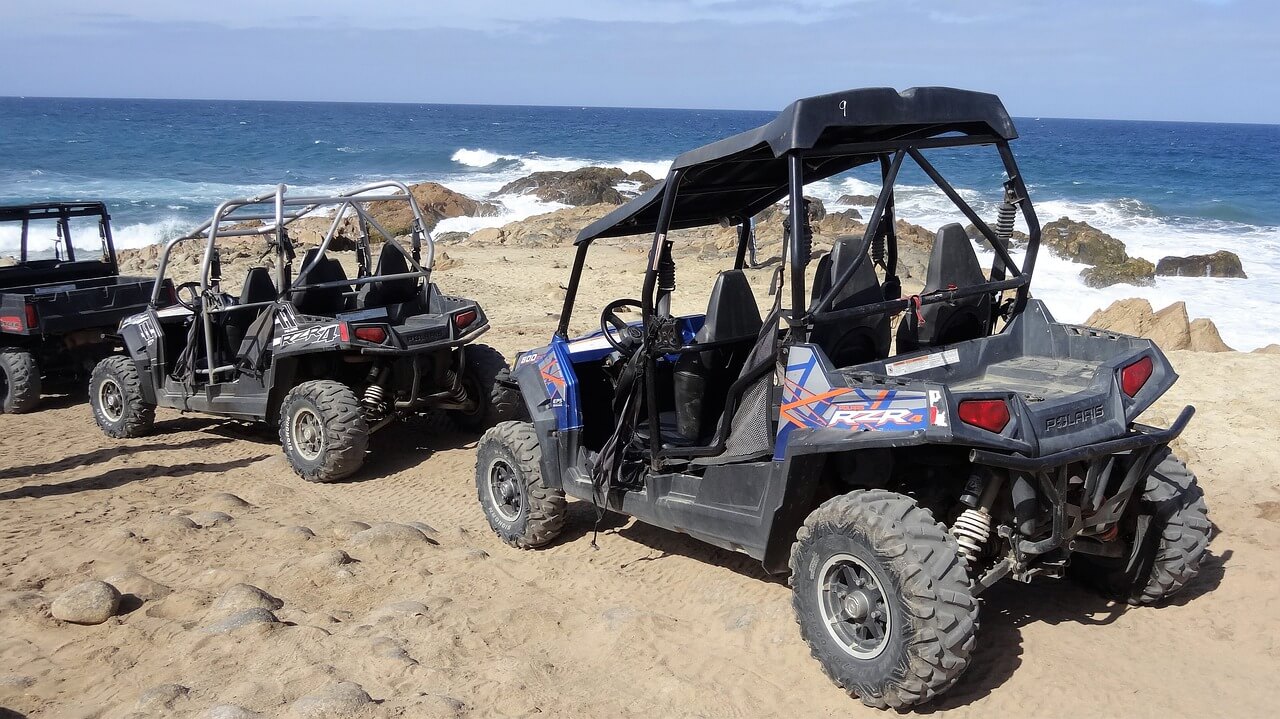
Lastly, a strong online presence is vital in this modern era. My competitors utilize user-friendly websites, active social media profiles, and online booking systems to make it easier for customers to find and book rentals.
This is something I will prioritize when setting up my business, ensuring I stay visible to potential customers.
Understanding the competition is crucial for any business, and by focusing on these key areas, I am confident that I can establish a successful ATV rental business.
Delivering Top-Notch Customer Service
In the ATV rental business, one of the most critical aspects to focus on is providing top-notch customer service. My objective is to make sure our customers feel valued and satisfied with their experience from start to finish.
I do this by focusing on a few essential areas:
First of all, it’s vital to be accessible and responsive. I always make sure to answer emails, phone calls, and social media inquiries promptly. Keeping lines of communication open demonstrates my commitment to our customers and allows me to address any concerns or questions they may have.
Next, I offer personalized assistance throughout the rental process. I take the time to get to know each customer, their preferences, and their level of experience with ATVs. By tailoring recommendations and guidance based on individual needs, I can help ensure a fantastic experience for every customer.
Additionally, I strive to create a welcoming atmosphere in the rental location. A clean, well-organized space with friendly, knowledgeable staff goes a long way in making our customers feel comfortable and confident during their visit. It’s all about going the extra mile to provide an enjoyable environment.
Lastly, I focus on safety. I always emphasize the importance of riding responsibly and using protective gear. As a business owner, it’s important for me to provide thorough orientation and safety briefings for each customer, ensuring that they fully understand the precautions to take while riding an ATV.
By keeping these factors in mind and maintaining a friendly tone, I work to offer the best customer service possible in my ATV rental business. It’s a vital component that keeps customers returning and helps my business continue to grow and succeed.
Registering Your Business and Choosing a Name
When I started my ATV rental business, one of the first steps I took was registering it. Registering a business is essential for legal and tax purposes. I learned that the process may vary depending on the country and state you are in, but generally, it involves selecting a business structure and registering it with the appropriate government agency.
In my case, I chose to register my business as a Limited Liability Company (LLC). This provided me with personal liability protection and certain tax benefits. To do this, I had to file the necessary paperwork with my state’s secretary of state office and pay the required fees.
Another crucial step in setting up my ATV rental business was choosing a name. I wanted a unique and memorable name that would represent my brand and services well. After brainstorming a list of potential names, I checked their availability using an online business name search tool.
I also ensured that the domain name was available for my website.
Once I had my business name, I registered it with my local government. In some regions, it’s also important to obtain any necessary licenses or permits to operate an ATV rental business. I made sure to check my local laws and regulations.
After registering my business and securing a name, I began building my brand. I invested in creating a logo, designing my website, and marketing my services. Of course, I also focused on providing top-notch customer service and maintaining a fleet of well-maintained ATVs.
I hope my experience can help you in setting up your own ATV rental business. Remember to register your business, choose a unique name, and comply with any necessary laws and regulations.
Following ATV Rental Business Trends
As I look into the ATV rental business, it’s clear that several trends have emerged in recent years. One of the most significant trends has been the surge in interest in outdoor recreational activities. More people than ever before want to explore the great outdoors, and ATVs provide a thrilling, convenient way of doing so.
This demand has prompted ATV rental businesses to focus on offering a wide range of vehicles and well-maintained trails to cater to their customers’ needs.
Another exciting trend is the growing adoption of eco-friendly ATVs. Manufacturers are increasingly developing electric and hybrid models to reduce their environmental impact.
For ATV rental businesses, this means they have the opportunity to appeal to environmentally conscious customers by showcasing a commitment to sustainability. I’ve noticed more businesses investing in these greener models, which is something to monitor as it may become the standard in the industry.
In addition to these trends, technology has played a significant role in shaping the ATV rental business landscape. GPS systems and smartphone applications have been developed specifically for ATV riders, allowing them to easily track their routes and get important information about nearby trails.
Furthermore, enhanced safety features have become a priority among ATV manufacturers, which benefits rental businesses as well.
Equipping their fleet with the latest safety technology, such as electronic stability control and rollover protection systems, can help attract customers and ensure they have a safe and enjoyable experience.
To sum it up, keeping up with trends is crucial for success in the ATV rental business.
By staying informed on emerging technologies, environmental initiatives, and customer preferences, I believe my business will better cater to a diverse audience and continue to flourish in this exciting industry.
Comparing ATV with Kayak Rental Business
As an ATV rental business owner, I’ve noticed some key differences between the ATV and kayak rental industries. These differences can impact the overall success and profitability of each type of rental business.
One of the primary differences between ATV and kayak rentals is the clientele. While both cater to adventure seekers, ATVs often attract a more diverse range of customers, from families with young children to experienced off-road enthusiasts.
Kayak rentals, on the other hand, tend to attract a more specific demographic, such as water sports enthusiasts or nature lovers.
Another notable difference is the required investment for starting each business. ATVs are typically more expensive than kayaks, which means higher upfront costs for purchasing equipment.
Nevertheless, ATVs often have a higher rental rate compared to kayaks, which can help offset the initial investment over time.
When it comes to location, both ATV and kayak rental businesses need access to suitable terrain or bodies of water for customers to enjoy their rentals. For ATVs, this might mean being near popular off-road trails or parks, while for kayaks, it could mean being near a river, lake, or other waterways.
Each business has its own unique location requirements, which can impact the ease of setting up shop and the potential for growth in a given area.
In terms of safety and liability, both businesses need to address potential risks. ATVs, however, may present a higher risk than kayaks due to the possibility of accidents at high speeds or on difficult trails.
This means more stringent safety measures and insurance requirements for ATV rental businesses compared to kayak rentals.
Finally, the seasonality of each business can be a major factor in comparing ATVs to kayaks. In many areas, ATVs can be rented year-round, from snowy winter excursions to warm summer adventures. Kayak rentals often have a more limited season, depending largely on weather and water conditions.
This means that the ATV rental market may have a more consistent demand throughout the year, while kayak rental businesses must capitalize on the high rental season to generate enough revenue to sustain themselves during slower months.
While both ATV and kayak rental businesses serve the adventure-seeking market, they each come with their own unique challenges and opportunities. As a business owner, understanding these differences can help you decide which venture might be the best fit for your personal goals and resources.
Frequently Asked Questions
What are the initial steps to start an ATV rental business?
To start an ATV rental business, I would first conduct market research to understand the demand and competition in my chosen area. After having a clear idea, I would create a detailed business plan, which should include my target market, budget, pricing, marketing strategies, and expansion plans.
Also, securing financing or investment is necessary to cover the initial costs, such as purchasing ATVs and setting up a location.
How can I find the best location for my ATV rental business?
Finding the best location for my ATV rental business involves considering several factors. I would research popular trails, parks, or regions that attract off-roading enthusiasts, noting the accessibility and parking availability.
Additionally, establishing a presence in a tourist or resort area could attract more customers. It’s essential to take local competition into account and choose a visible, easy-to-find location for potential clients.
What permits and licenses are required for an ATV rental business?
The permits and licenses required for an ATV rental business may vary depending on the location and type of business. In general, I should obtain a business license and register with state and local authorities.
I’ll also need to check zoning and land use regulations, as well as ensure compliance with environmental and safety standards. Insurance coverage is also crucial to protect my business from potential liabilities.
How do I choose the right ATVs and equipment to offer?
Choosing the right ATVs and equipment involves understanding my target market’s preferences, which can vary depending on their skill levels and interests. To cater to a diverse clientele, I would consider offering a range of ATVs, from beginner-friendly models to high-performance vehicles for experienced riders.
Furthermore, I should provide necessary safety gear like helmets, goggles, and gloves to ensure my customers’ well-being.
What factors should I consider when setting rental rates?
When setting rental rates for my ATV business, I would take into account my costs, such as purchasing and maintaining ATVs, insurance, storage, and the rental location’s expenses. Additionally, it’s crucial to research my local competition and understand the market rates to remain competitive.
I should also consider offering special promotions or discounts for off-peak seasons or multi-day rentals to attract customers.
How can I promote and market my ATV rental business effectively?
To promote and market my ATV rental business effectively, I would leverage both online and offline marketing strategies. In the digital space, I would create a user-friendly website, engage on social media platforms, and invest in online advertising.
Locally, partnering with nearby hotels, tourist attractions, and travel agencies can bring in more customers.
Participating in local events, sponsoring events or clubs related to off-roading, and offering exceptional customer service are also vital components to building a strong reputation in the community.














